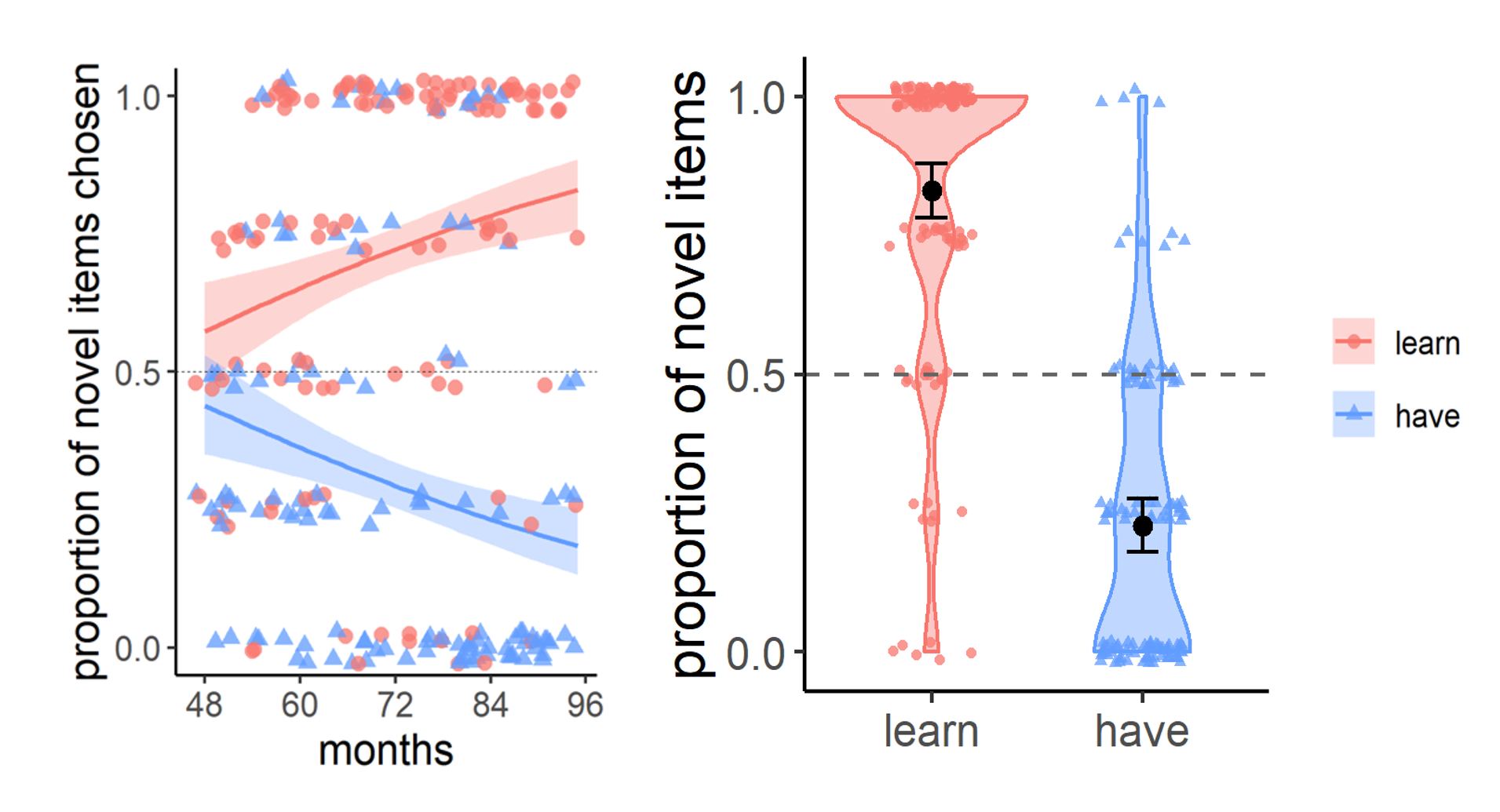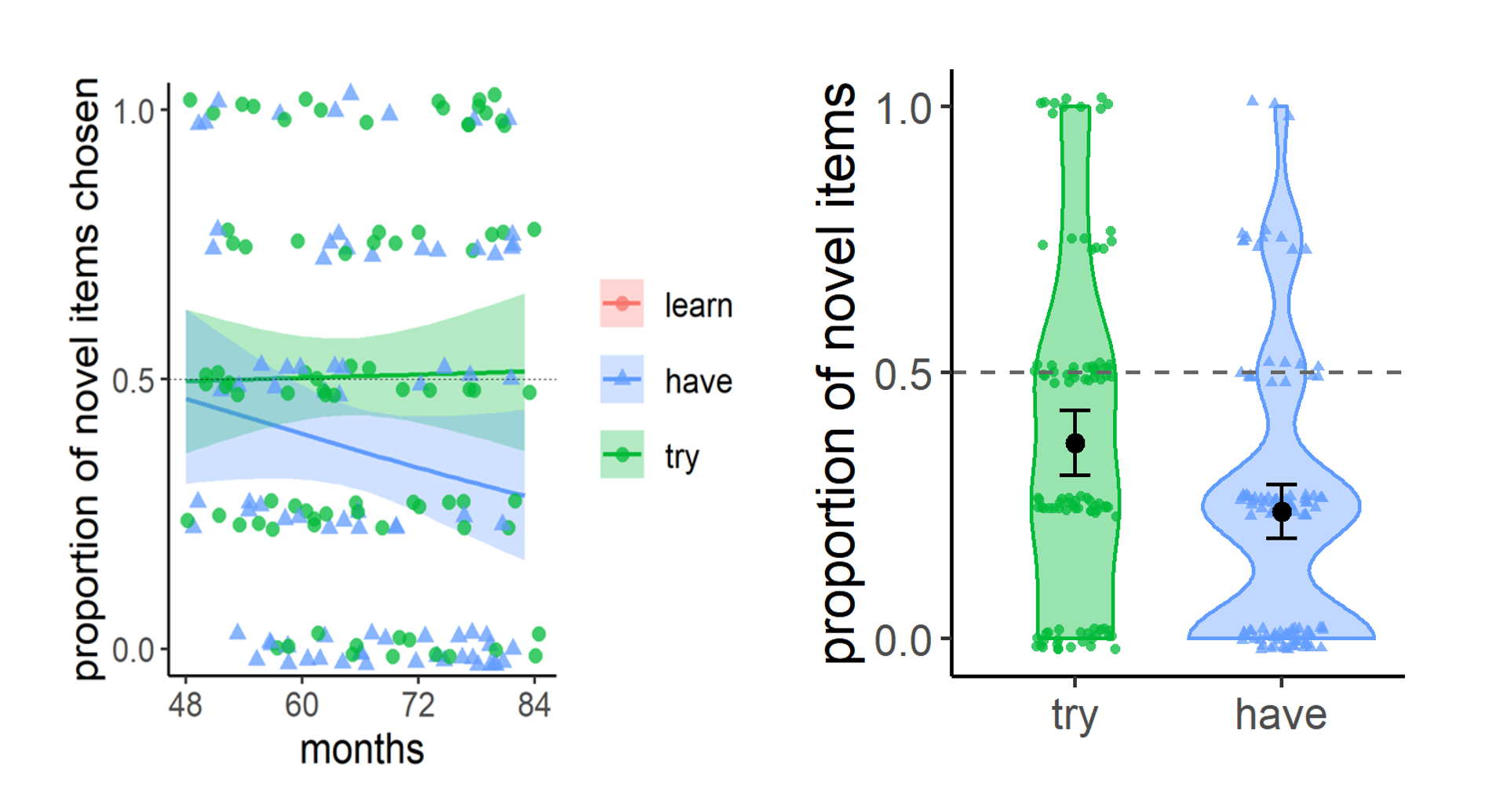The first time I stepped foot into a Whole Foods Market (a fancy, pricey grocery chain), I was amazed by the produce section replete with exotic fruits that I had never seen before: rambutan, cherimoya, horned melon, and most bizarrely, in this Westerner’s humble opinion, Buddha’s hand (see below left). Standing in the aisle, I quickly googled it, learning where it’s native to, how to cook with it, and what it tastes like. If it was available, I would have sampled a piece. But did I walk out of the store with this curious citron? No. Why not? Because it’s just too risky, and I like to stick with what I know: I bought watermelon instead.

Novel items catch our attention and provoke curiosity. When we want to learn about something, we usually choose the unfamiliar, rather than choosing to learn more about the familiar. However, we prefer the familiar when deciding what to acquire. After all, it’s the safe choice. I’ve never used a Buddha’s hand in my cooking, so why would I risk it when I know something else (like a watermelon) will result in a yummy dish? But I’d rather learn more about the Buddha’s hand (did you know it supposedly symbolizes happiness and wealth?) than watermelon. This difference in preference for novel or familiar items is fueled by our goals: do we want to learn more about it, or do we want to have and use it?
Research has shown varying preferences for novelty between children and adults. Children have been shown to choose the unfamiliar in multiple scenarios: they choose novel images—as opposed to familiar ones—when asked which ones they prefer, and they tend to choose the novel toy to try out, but ultimately choose the familiar one to keep. Adults are more likely to fall victim to the mere exposure effect: they prefer what they have been repeatedly exposed to, especially in consumer decisions (hence my watermelon choice). Research on the explore-exploit tradeoff has shown that children tend to explore options that yield varying rewards while adults exploit the safe option that seemingly maximizes rewards.

Claudia Sehl, Stephanie Denison, and Ori Friedman (pictured above) further investigated this phenomenon and described the research in a recent article, published in the Psychonomic Society journal Psychonomic Bulletin & Review. The authors aimed to get a better sense of the different scenarios that elicit a preference for novelty or familiarity, and how these preferences differ between children and adults.
They showed child and adult participants four different pairs of object categories. Each pair had one novel object and one familiar object. In the examples shown in the images below, the leftmost image shows a regular umbrella (a familiar object) and an umbrella with what looks like a smaller, inverted umbrella on top (a novel object).

Participants decided on the object they wanted to learn about or the object they would like to have. The decision was solely based on the appearances of the objects and the participants’ existing knowledge, as they were not given any information about the items. Like in previous research, both groups were more likely to choose the uncommon object to learn about, and more often chose the familiar object to have, as shown in the figure below.

Interestingly, older children that showed an increased preference to have familiar items, while younger children more commonly chose novel objects to have. This transition in the preference for familiarity in acquiring objects was exhibited at an average age of 4 years.
In another experiment, the researchers repeated the procedure but instead asked the participants which item they would prefer to try using instead of learning more about. This variation is more limiting in the knowledge gained, but not as much of a commitment as actually having it. As shown in the figures below, while adults were more likely to choose the novel item for trying rather than having, they overall preferred the familiar items for both judgements. Children also preferred familiar items to have and performed at chance levels for items they would want to try using.

Why wouldn’t participants prefer to try using novel objects? It isn’t a true commitment, and it does provide knowledge about how the object functions. However, maybe that information isn’t what participants are motivated to learn. It’s possible that information regarding how the object was made, who made it, etc., would be more interesting to the participant, so they opted to try an item that they know how to use. Future research could be done to further investigate the possible risks associated with trying new items.
Following these findings, the researchers were concerned that the preferences seen were due to the complexity of the novel items, instead of the uncommon nature of the object. That is, it is possible that the participants avoided the desire to have the novel items due to their more intricate design. To rule this out, in the final experiment, the researchers used object pairs that were analogous in complexity, as shown in the example pairs below.

To create a more sensitive measure of preferability, the researchers used a 5-point scale to assess adults’ preference to the object (1- definitely the left item, 3- equally, 5- definitely the right item). They again asked the participants either which item they wanted to have or which they wanted to learn about. The results stood true to the aforementioned findings: equating the complexity between the objects, adults nevertheless preferred the familiar object to have and chose the novel object to learn more about (see figure below).

These results showed a similar impact of goals on the preference for unfamiliarity among children and adults. When the goal is pure information gain, we prefer unusual items that optimize our learning. We’re curious creatures!
While novelty sparks our interest, it’s a different story when committing. Purchasing a Buddha’s hand would allow me to gain knowledge and experience, but it may also leave me with an unenjoyable dish and the guilt of its waste. However, now that I know my fate, I can hack it to see what real threat lies behind the commitment. Maybe our aversion to acquiring new items doesn’t protect us from as much danger as we may think.
Featured Psychonomic Society article
Sehl, C. G., Tran, E., Denison, S., & Friedman, O. (2022). Novelty preferences depend on goals. Psychonomic Bulletin & Review, 1-9. https://doi.org/10.3758/s13423-022-02118-9
